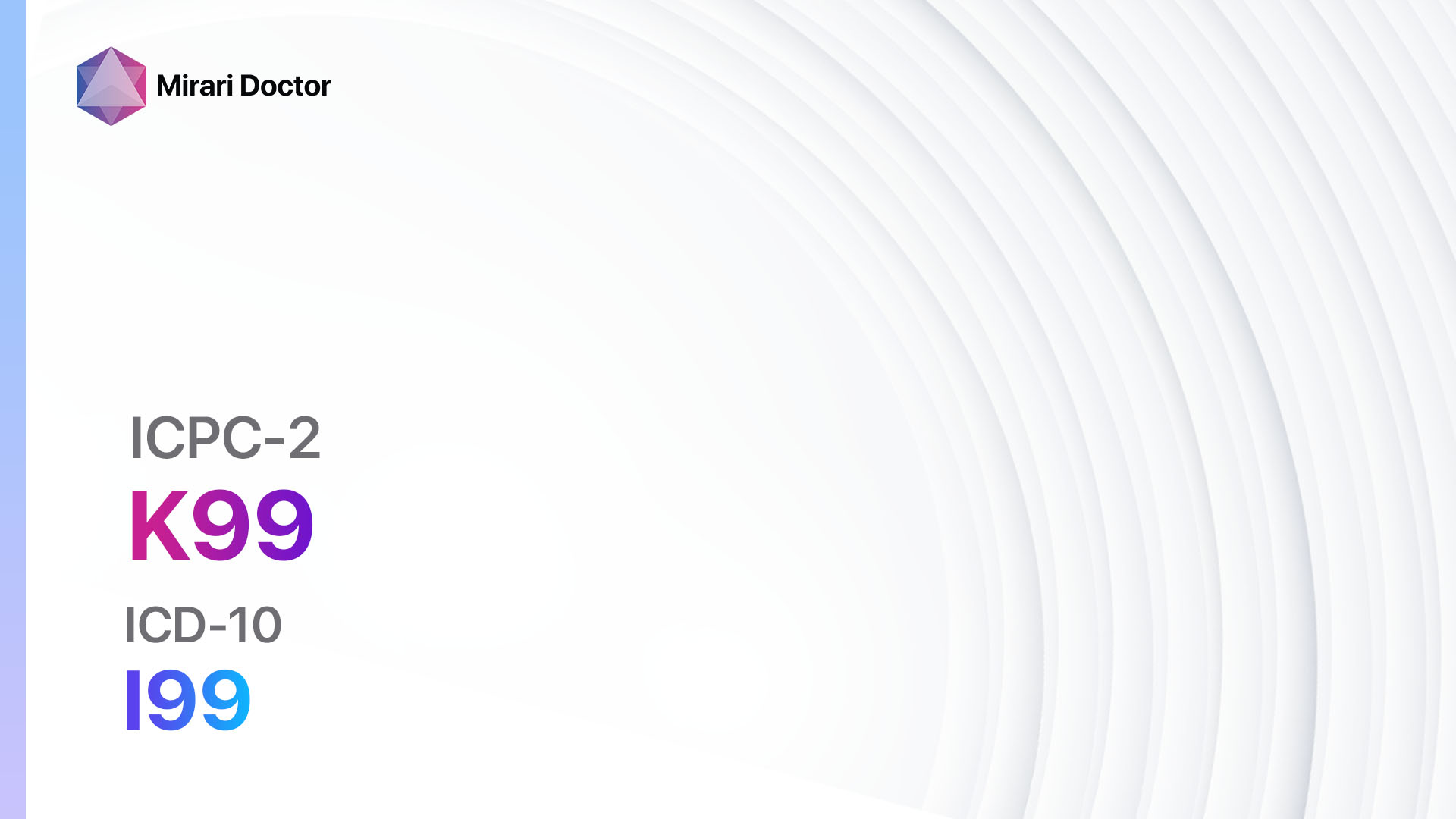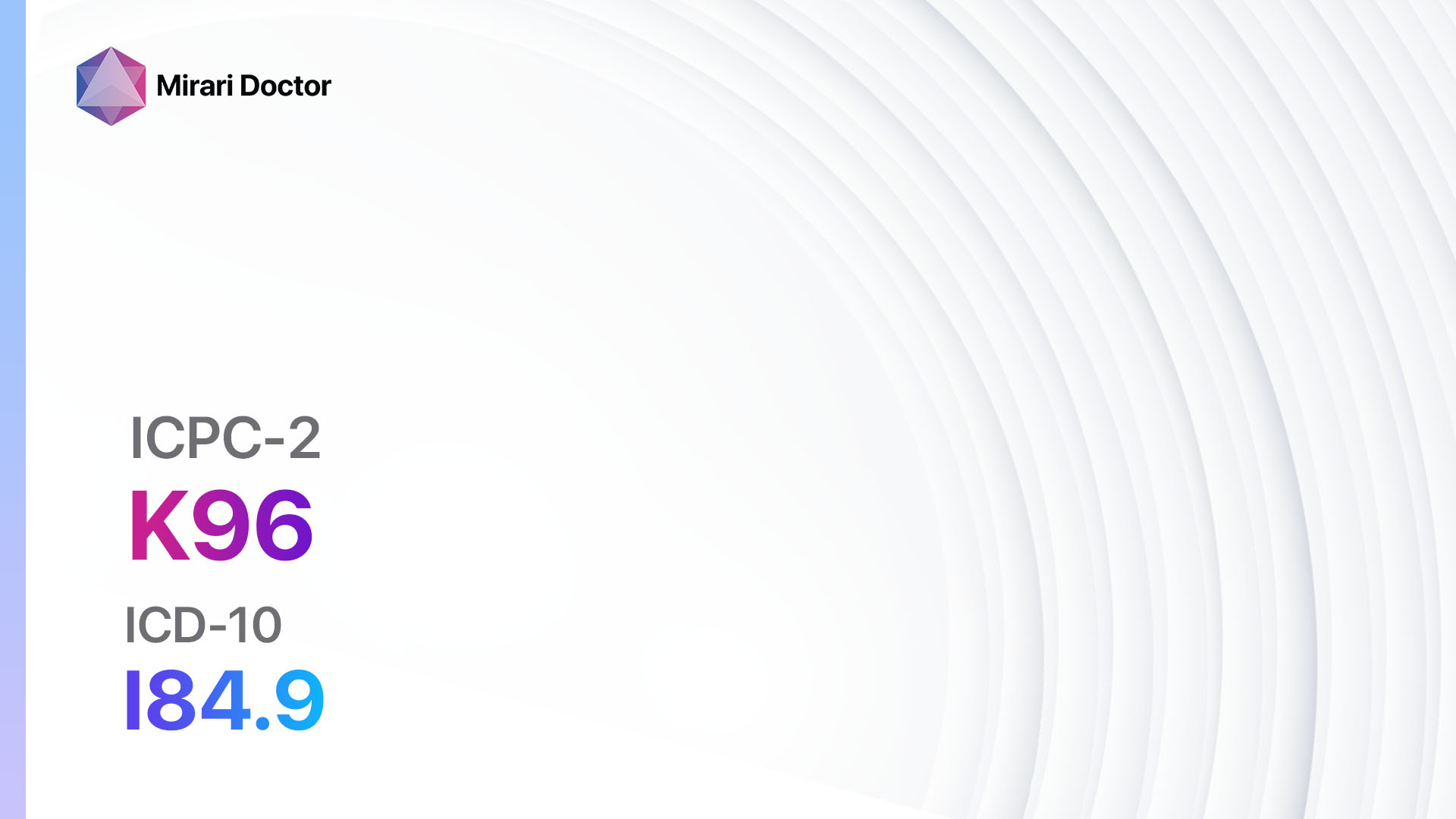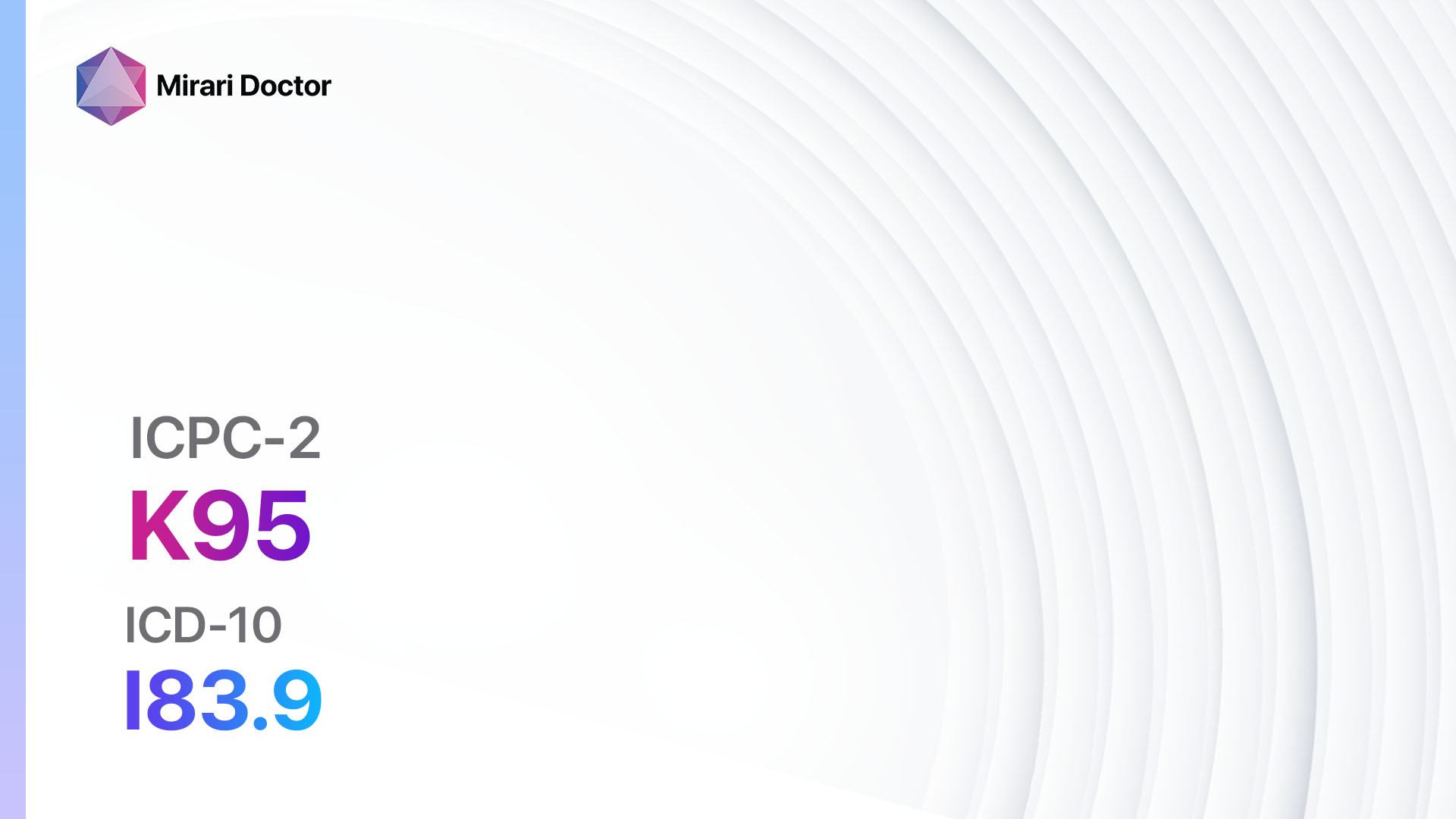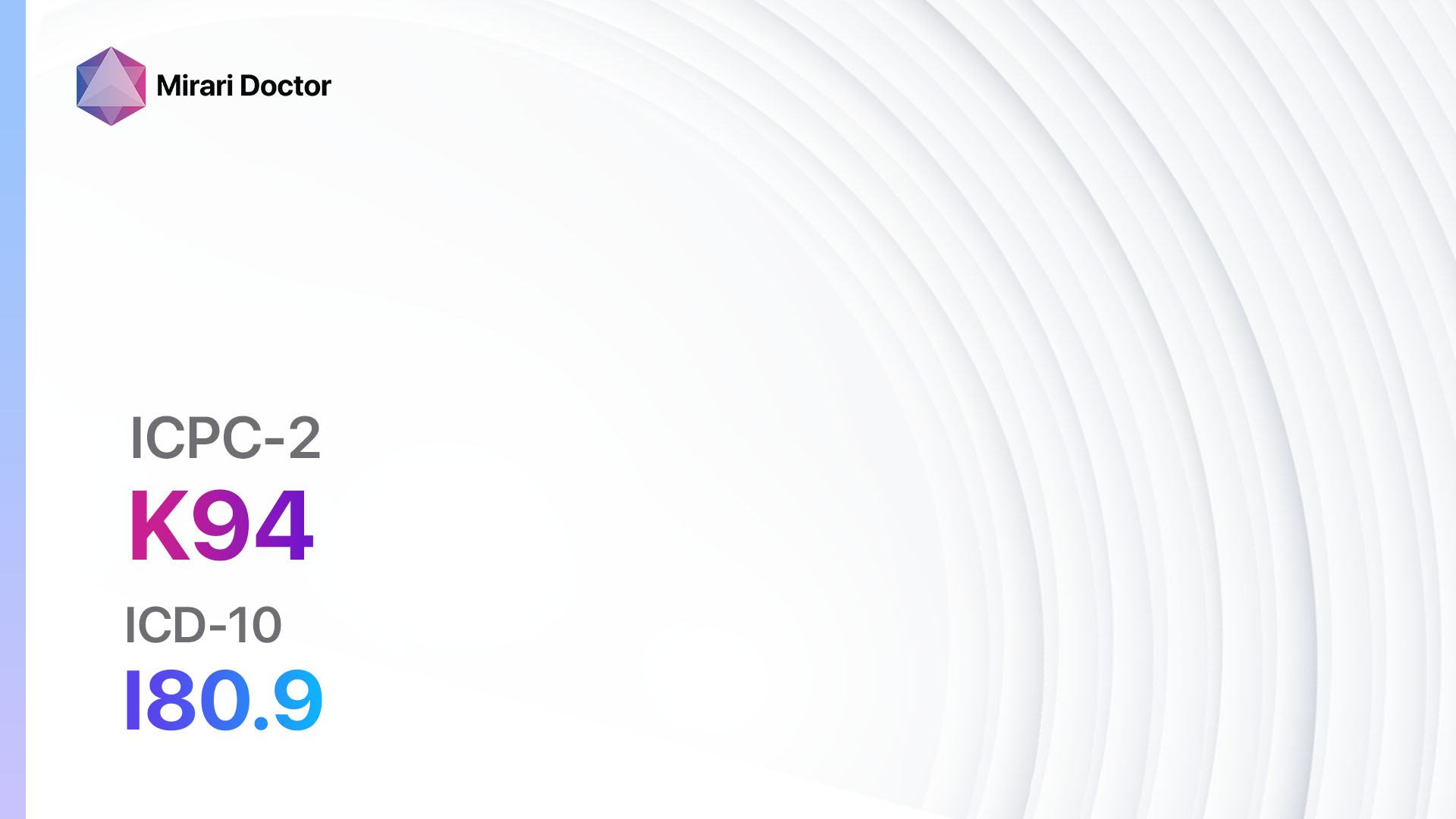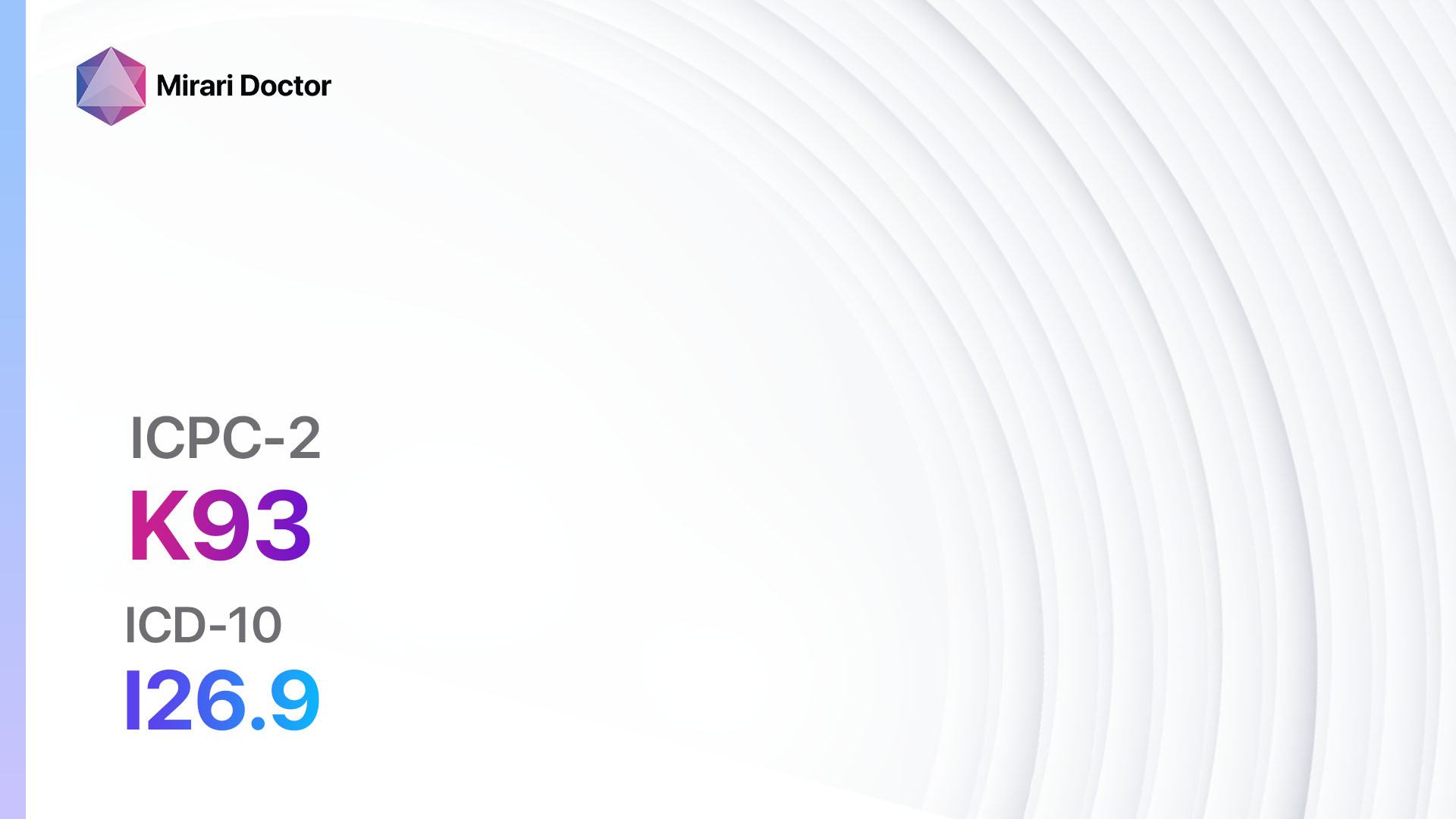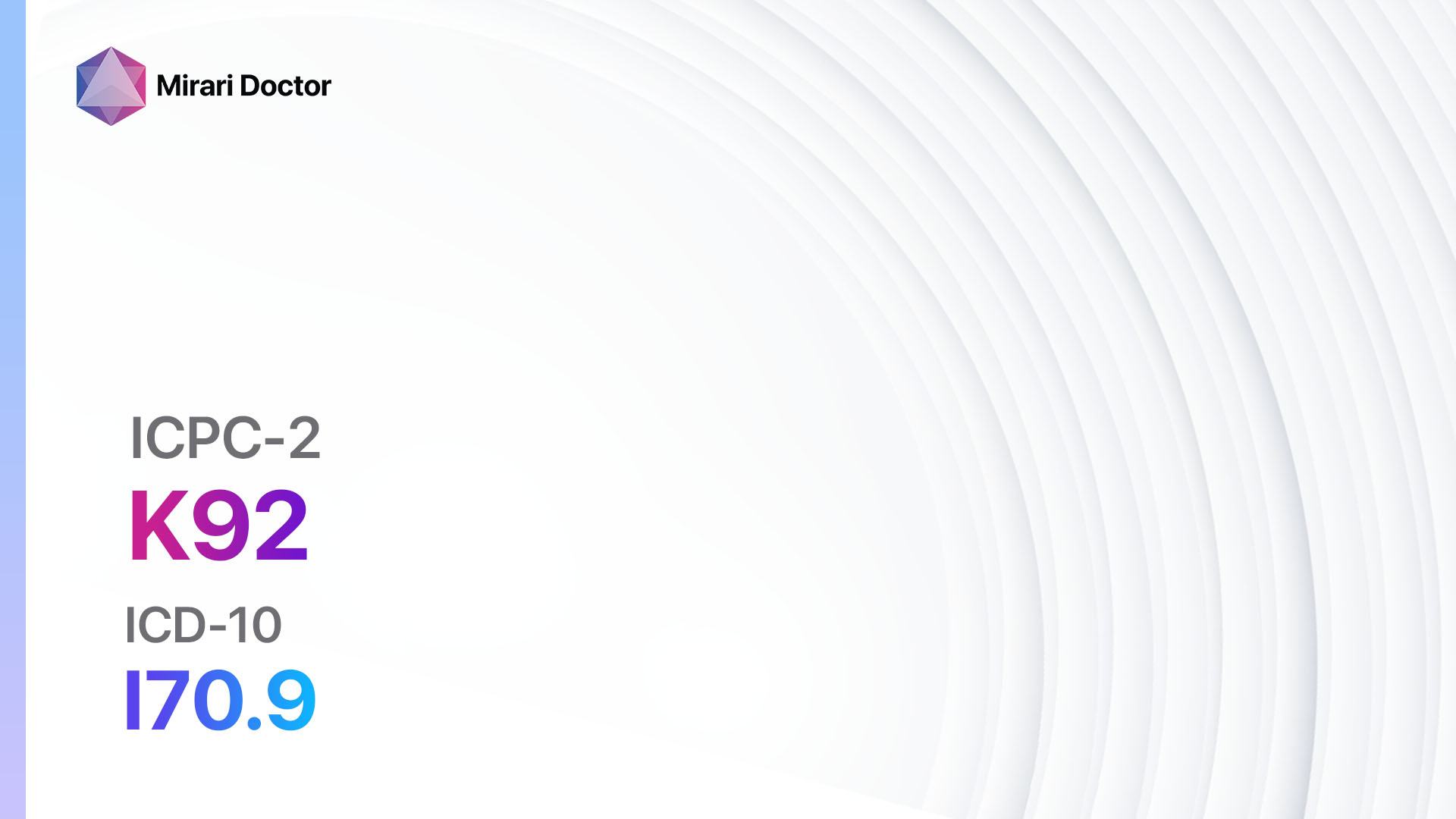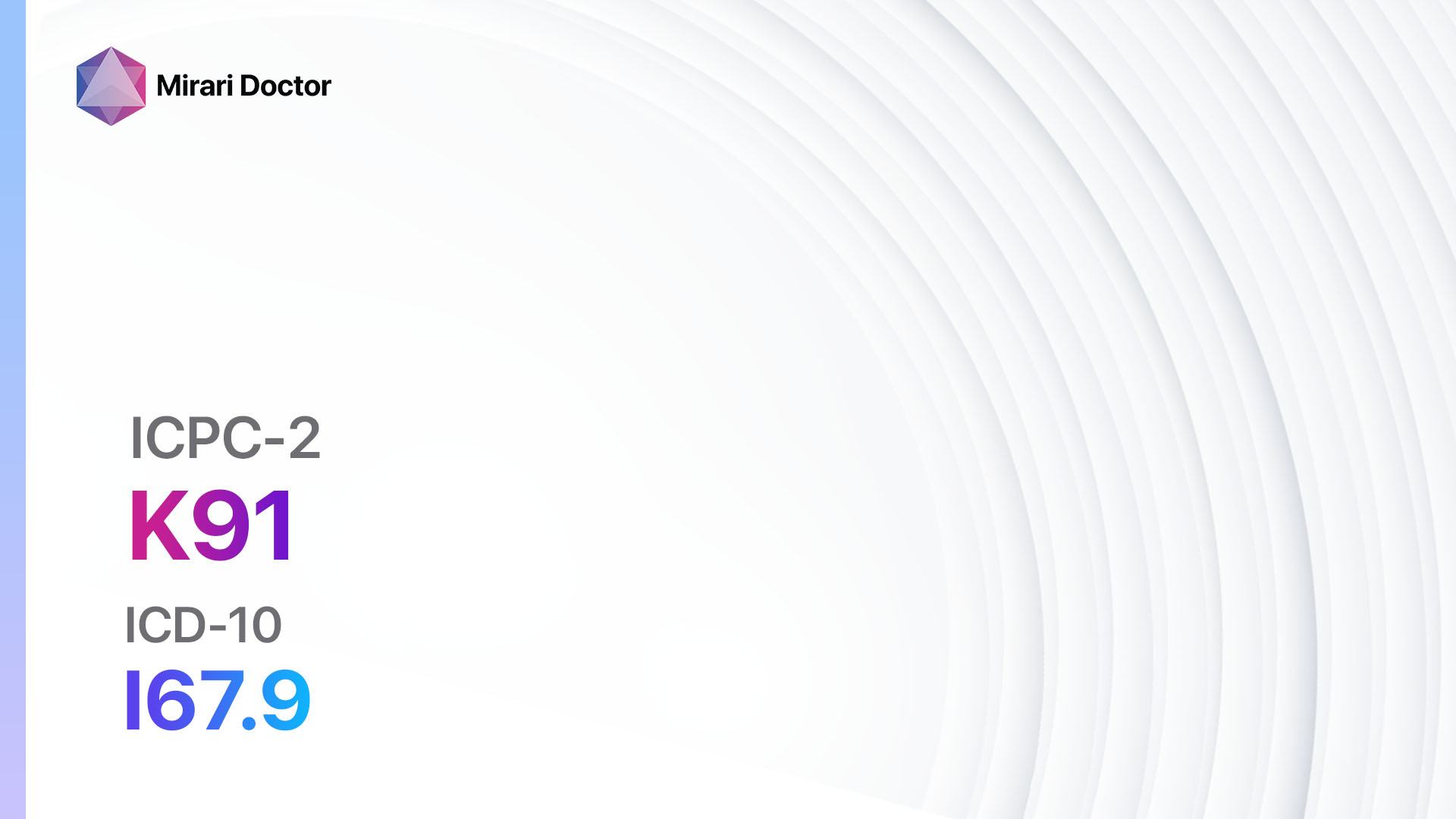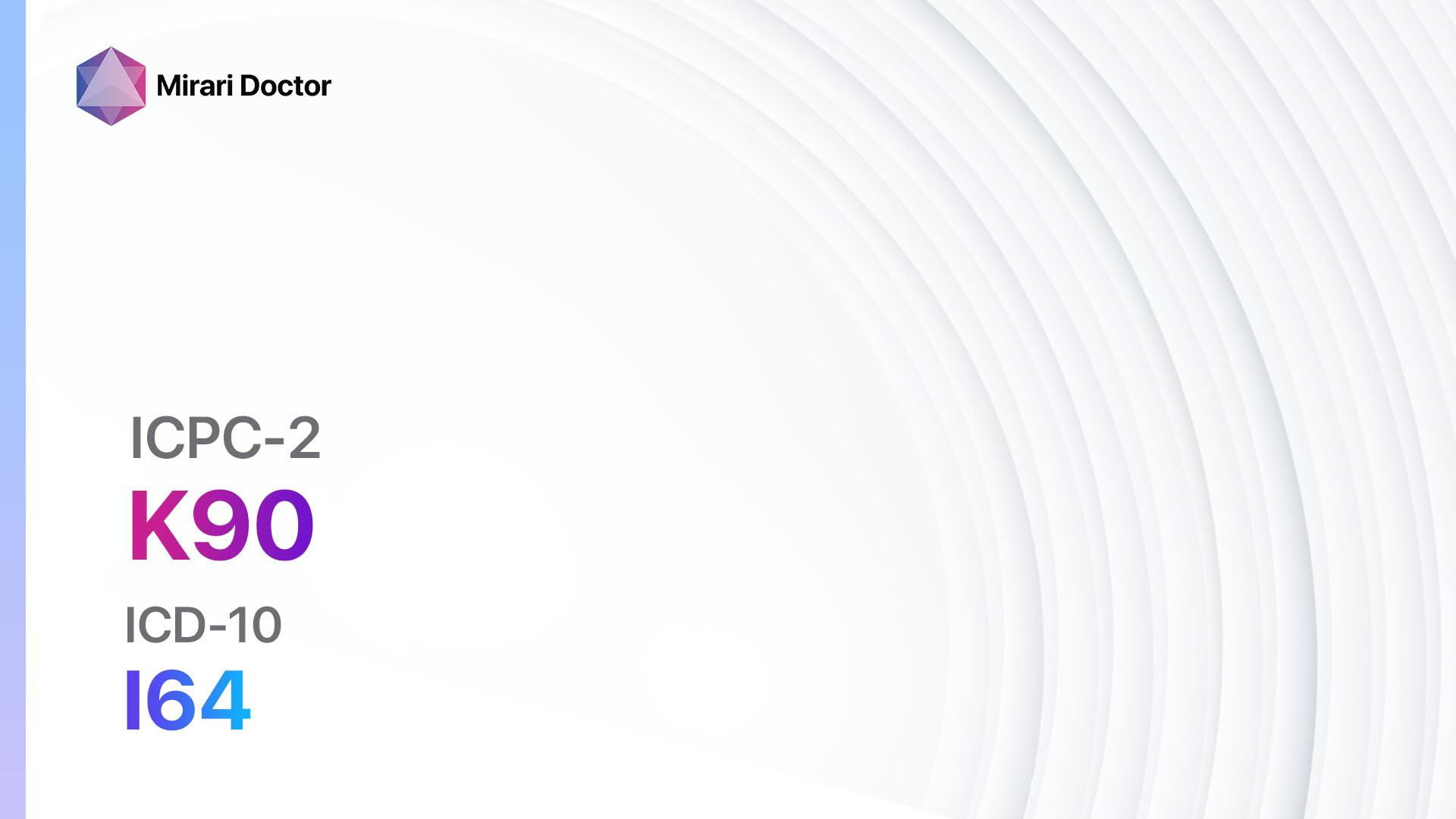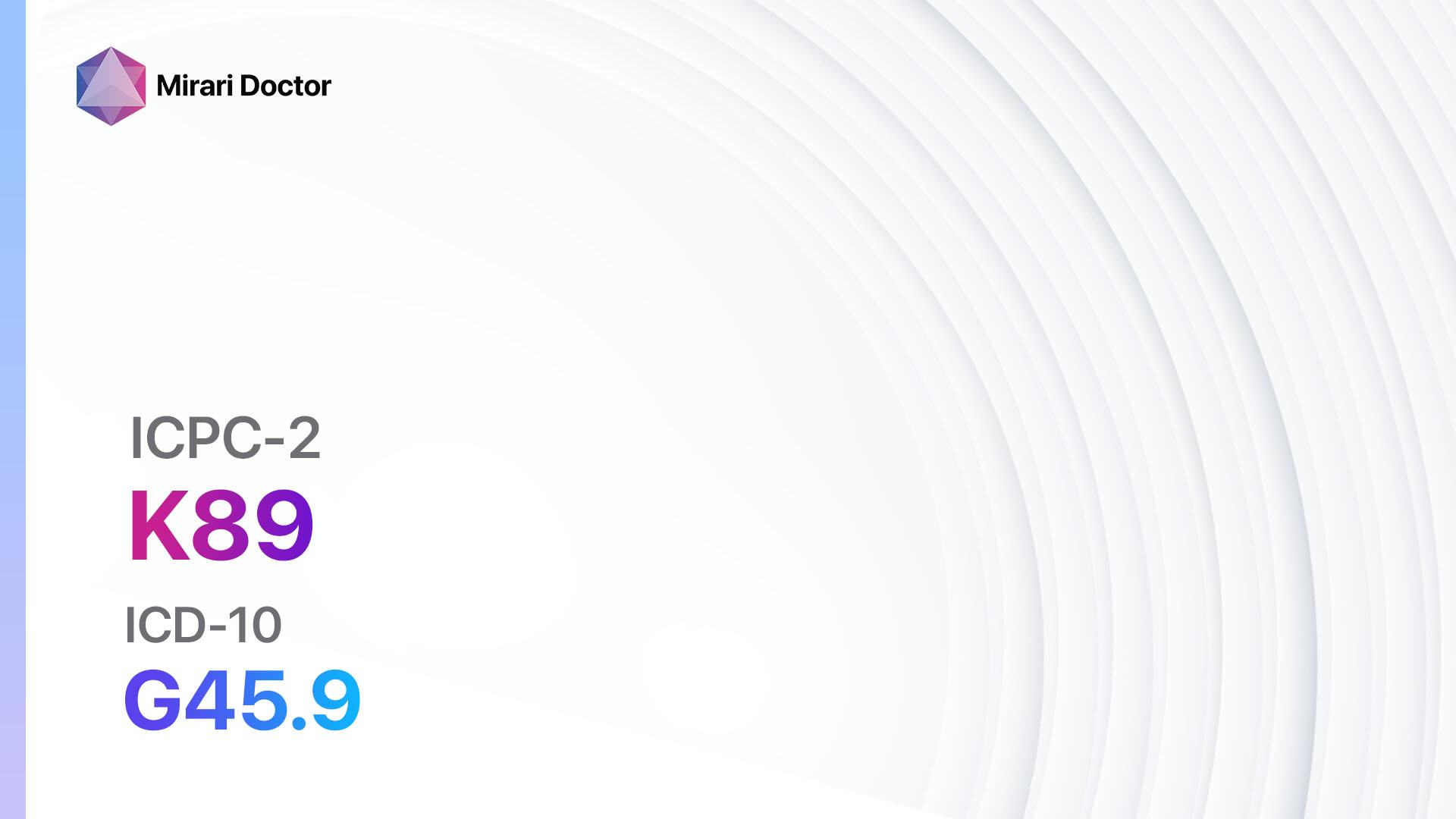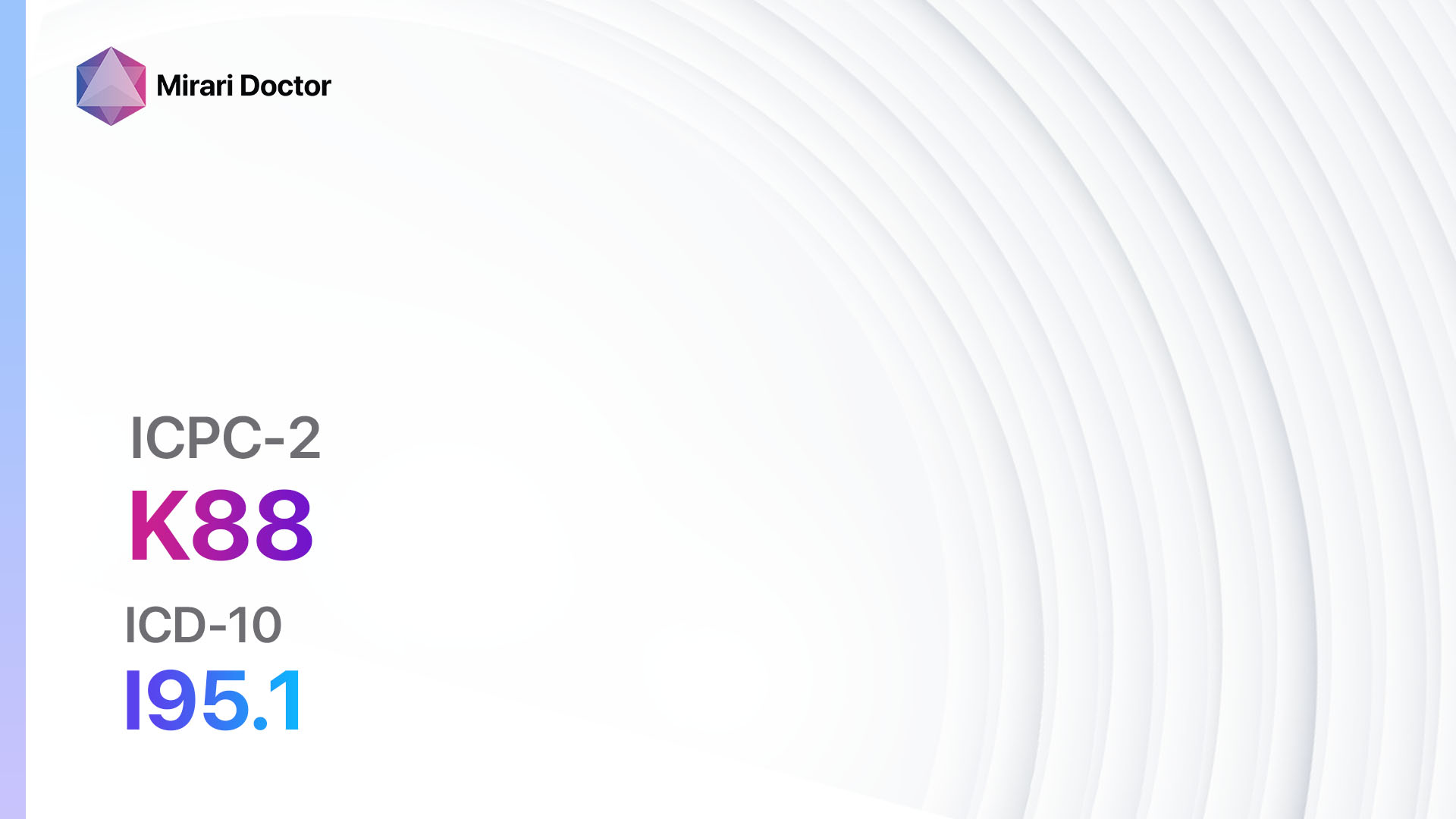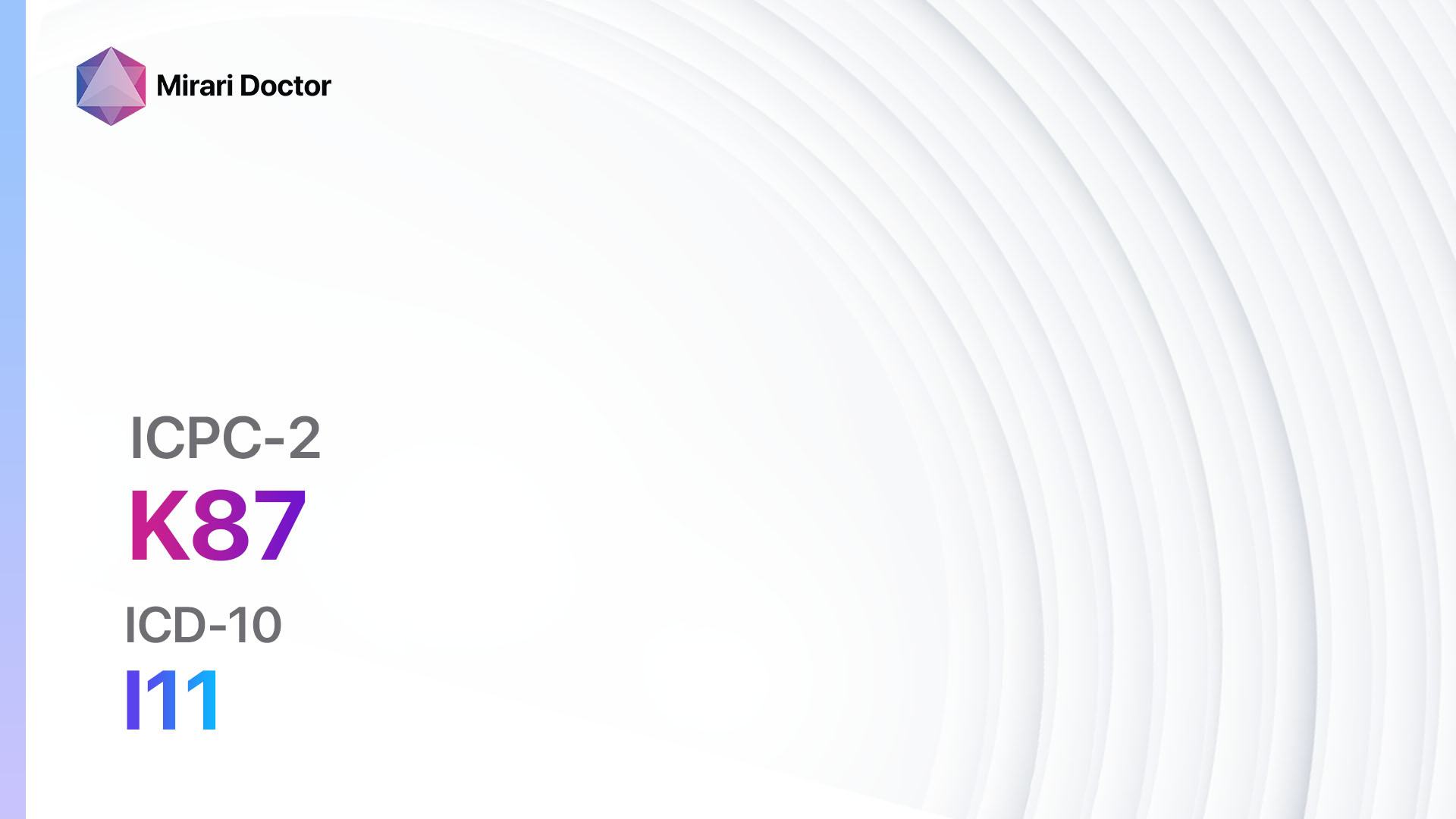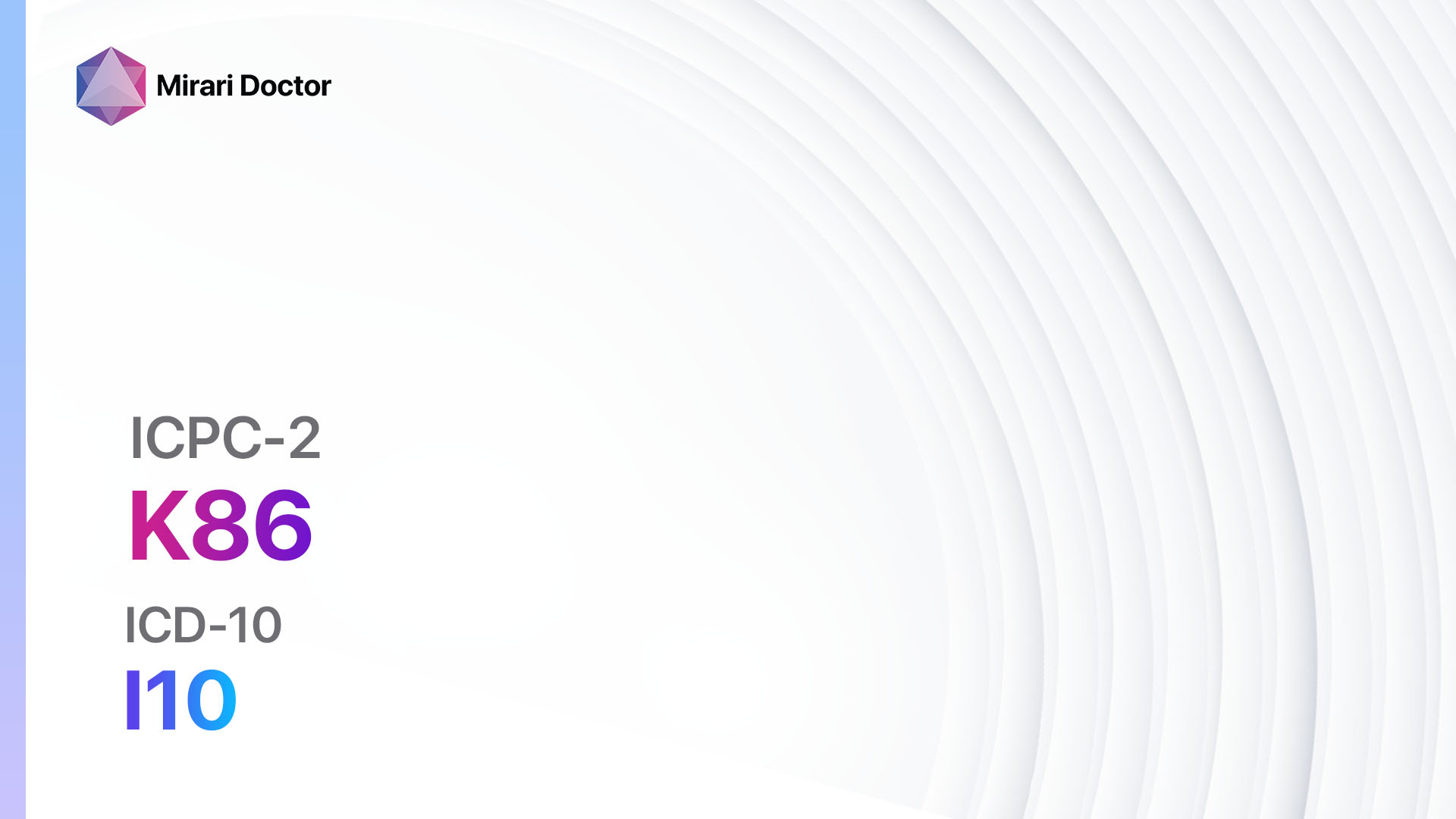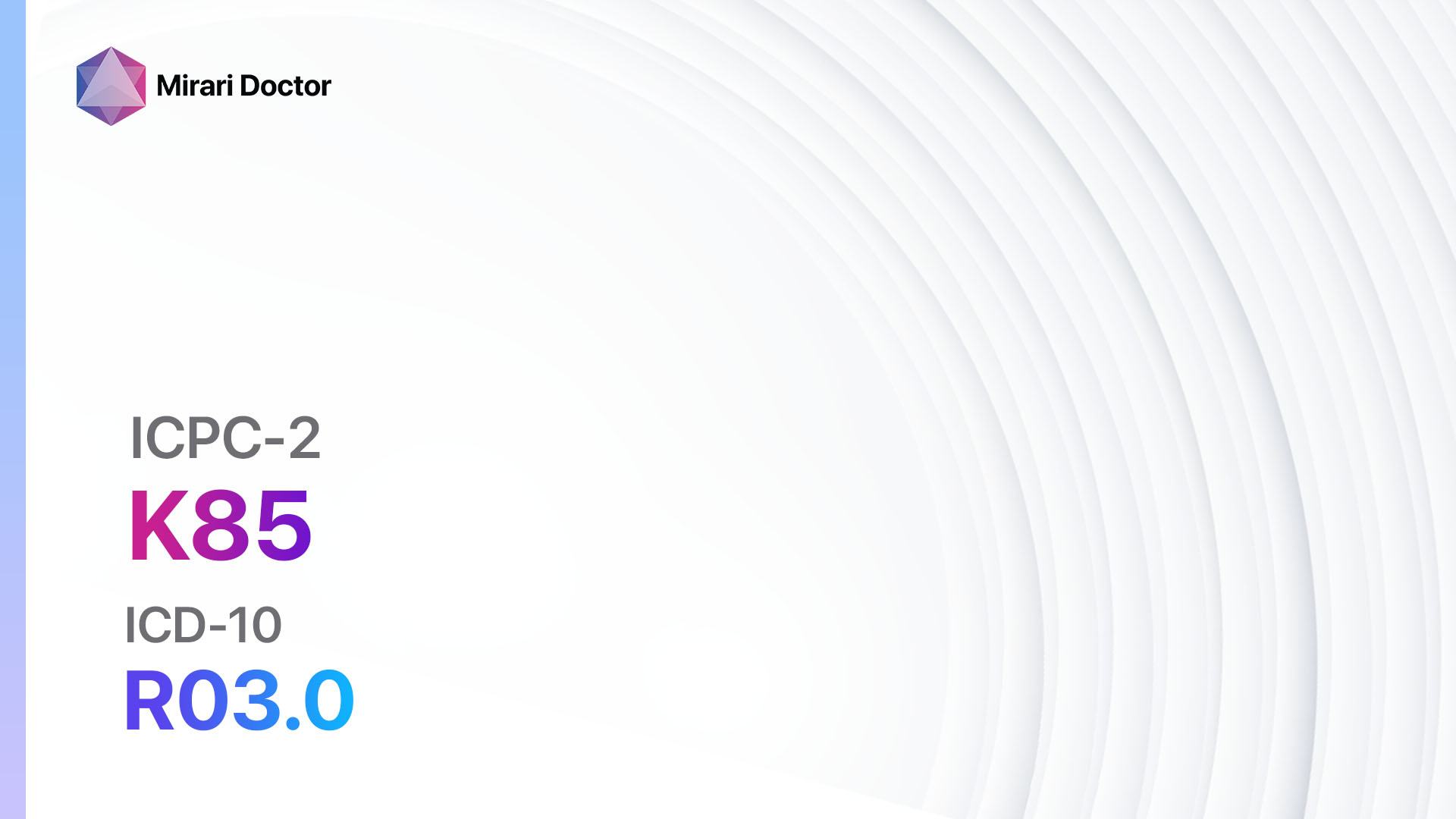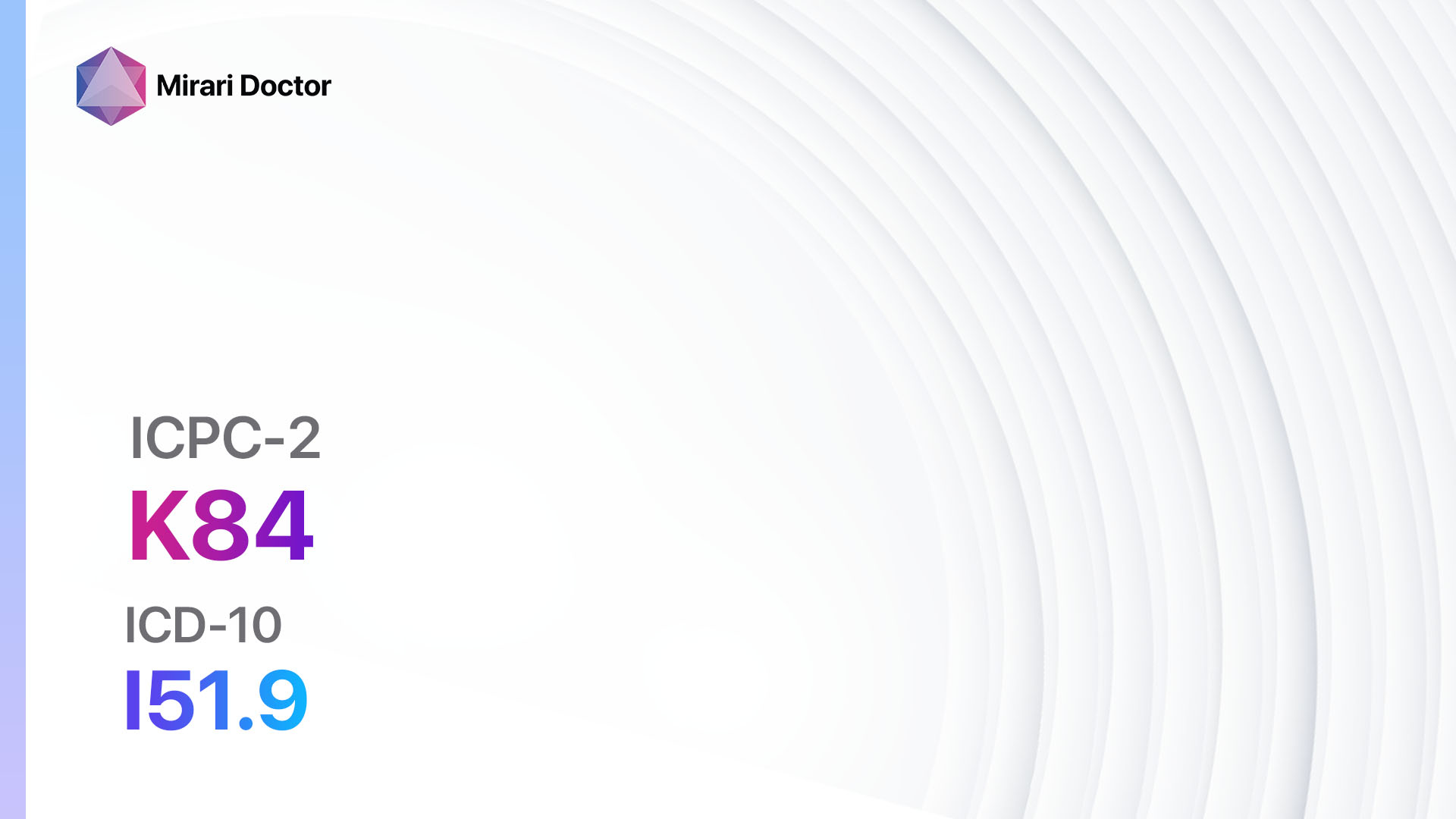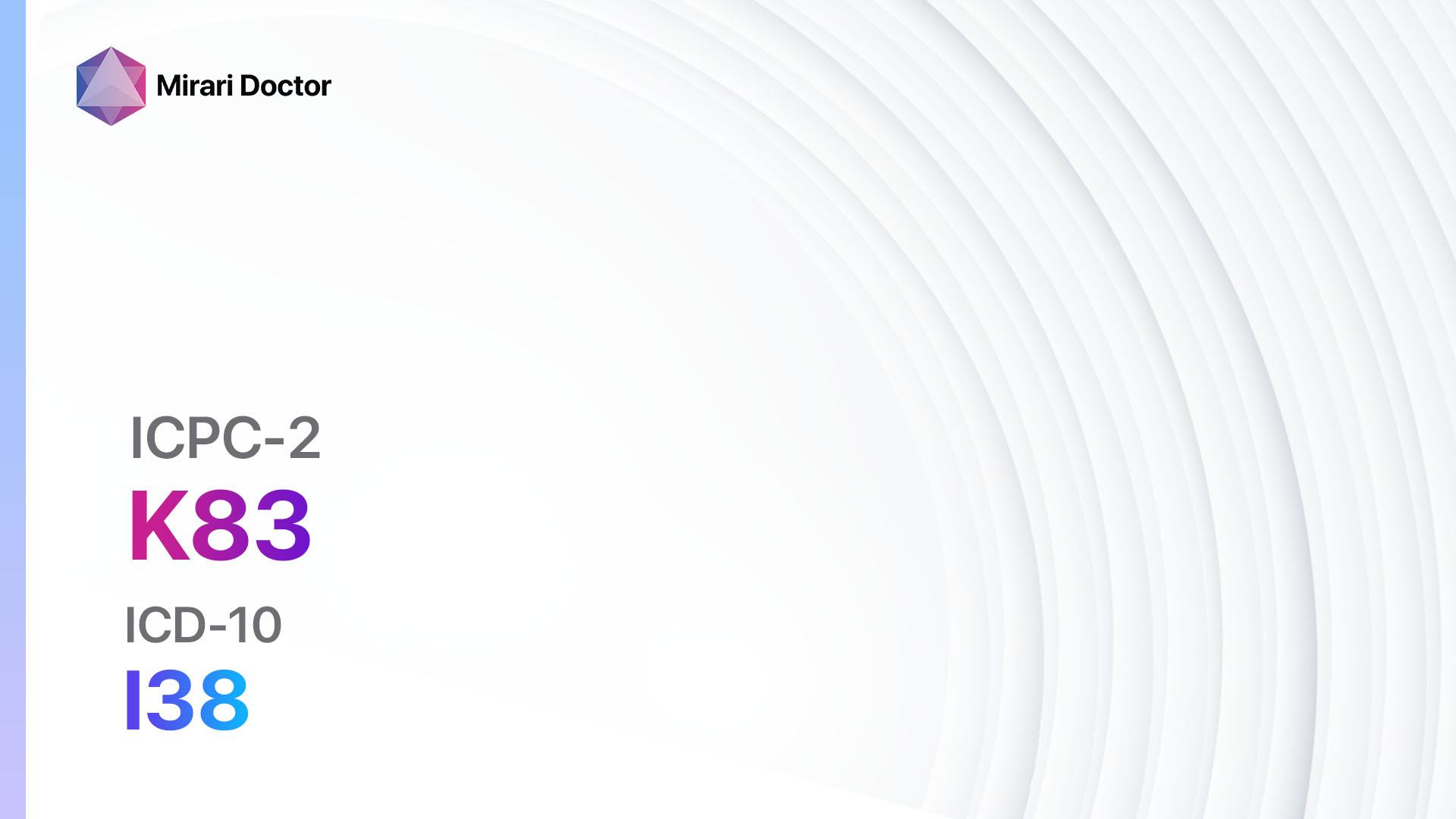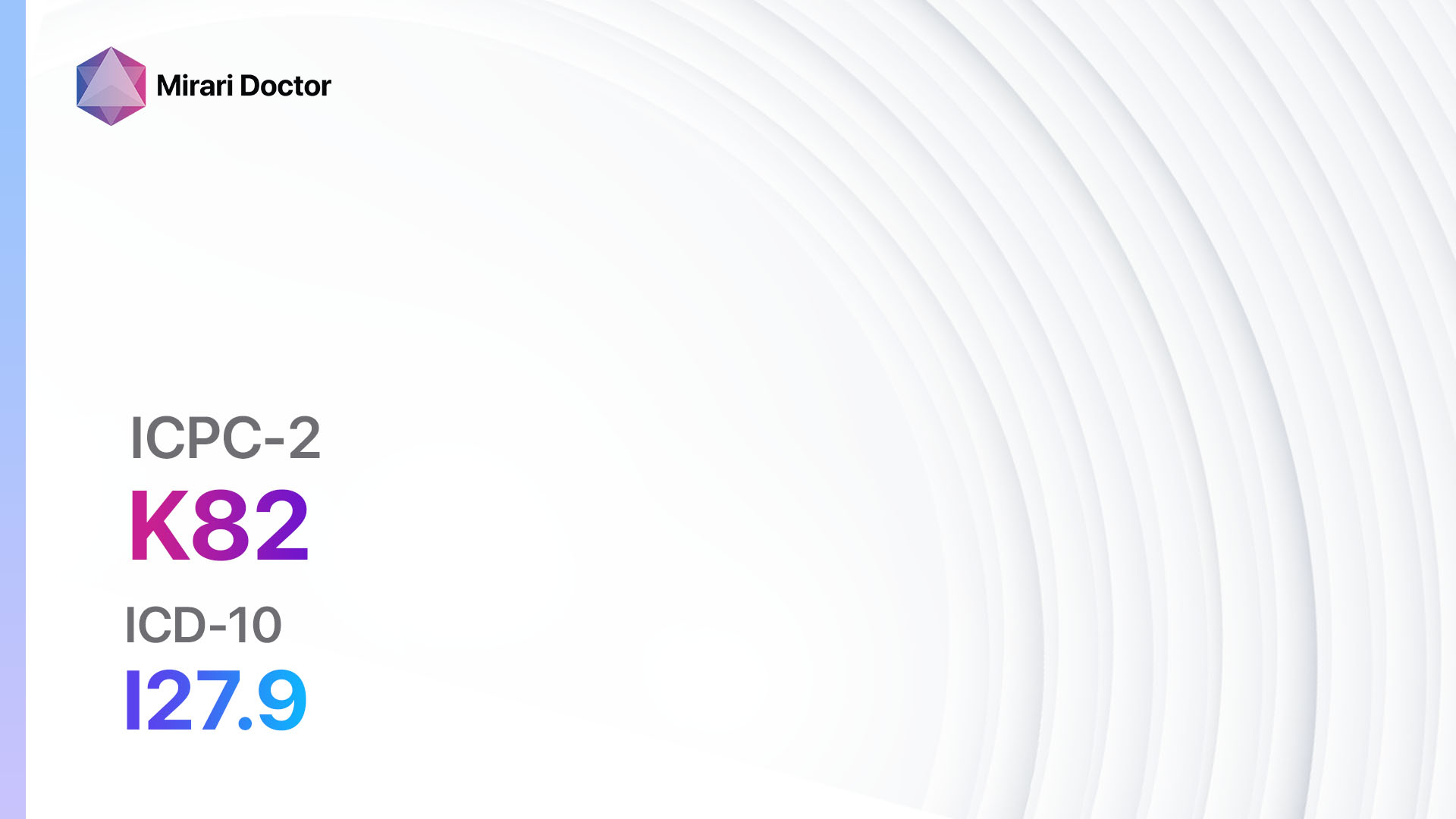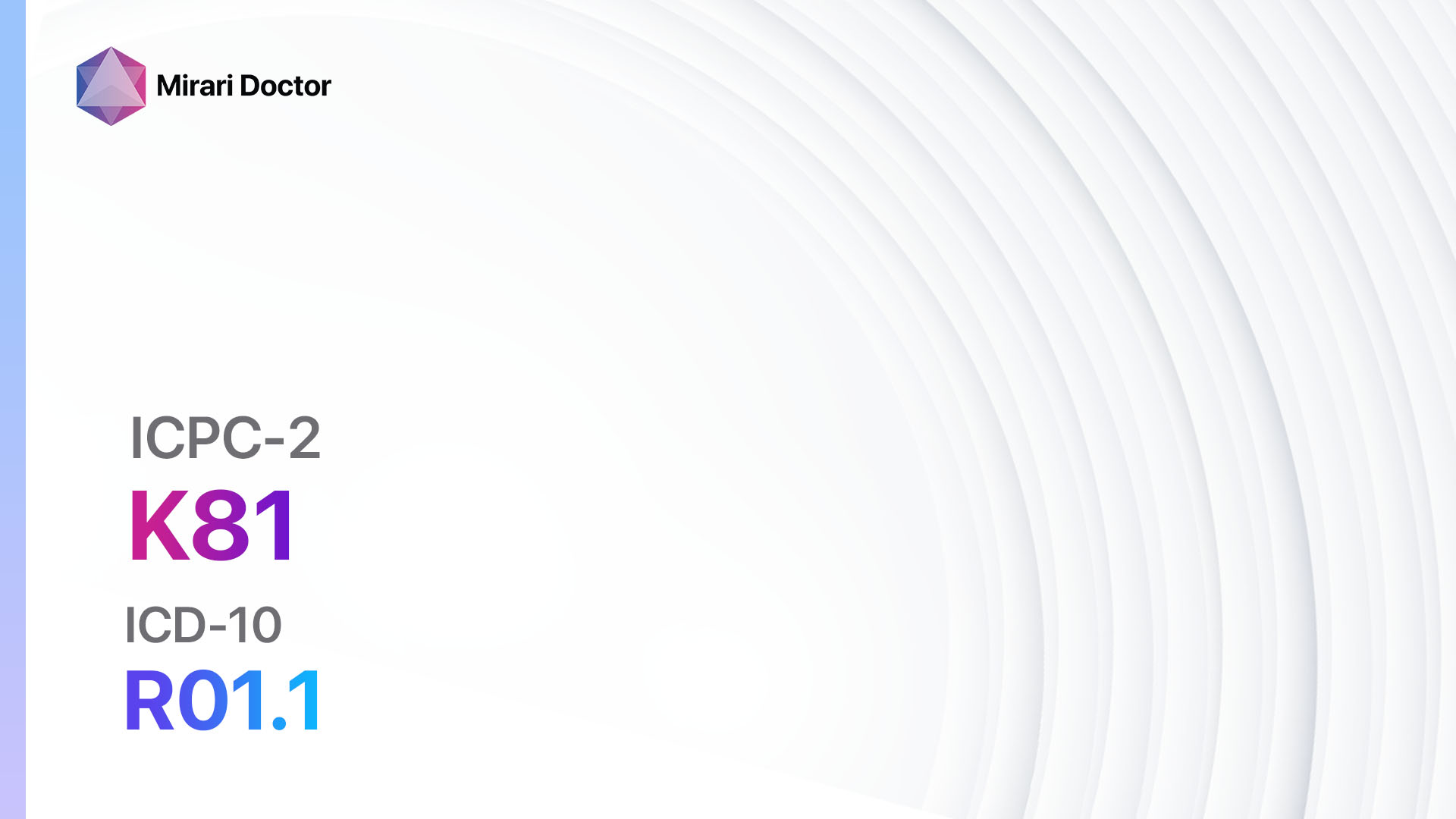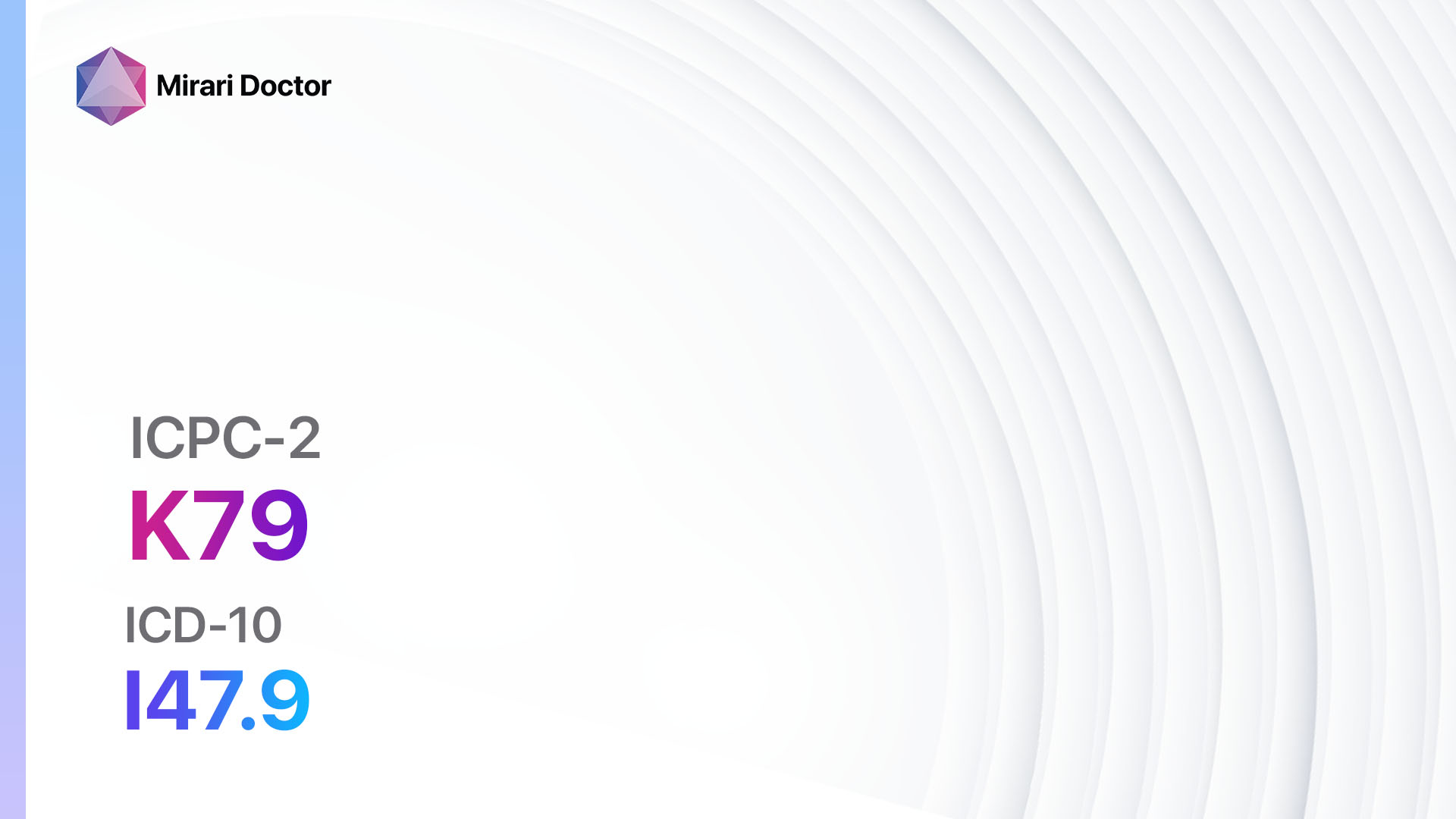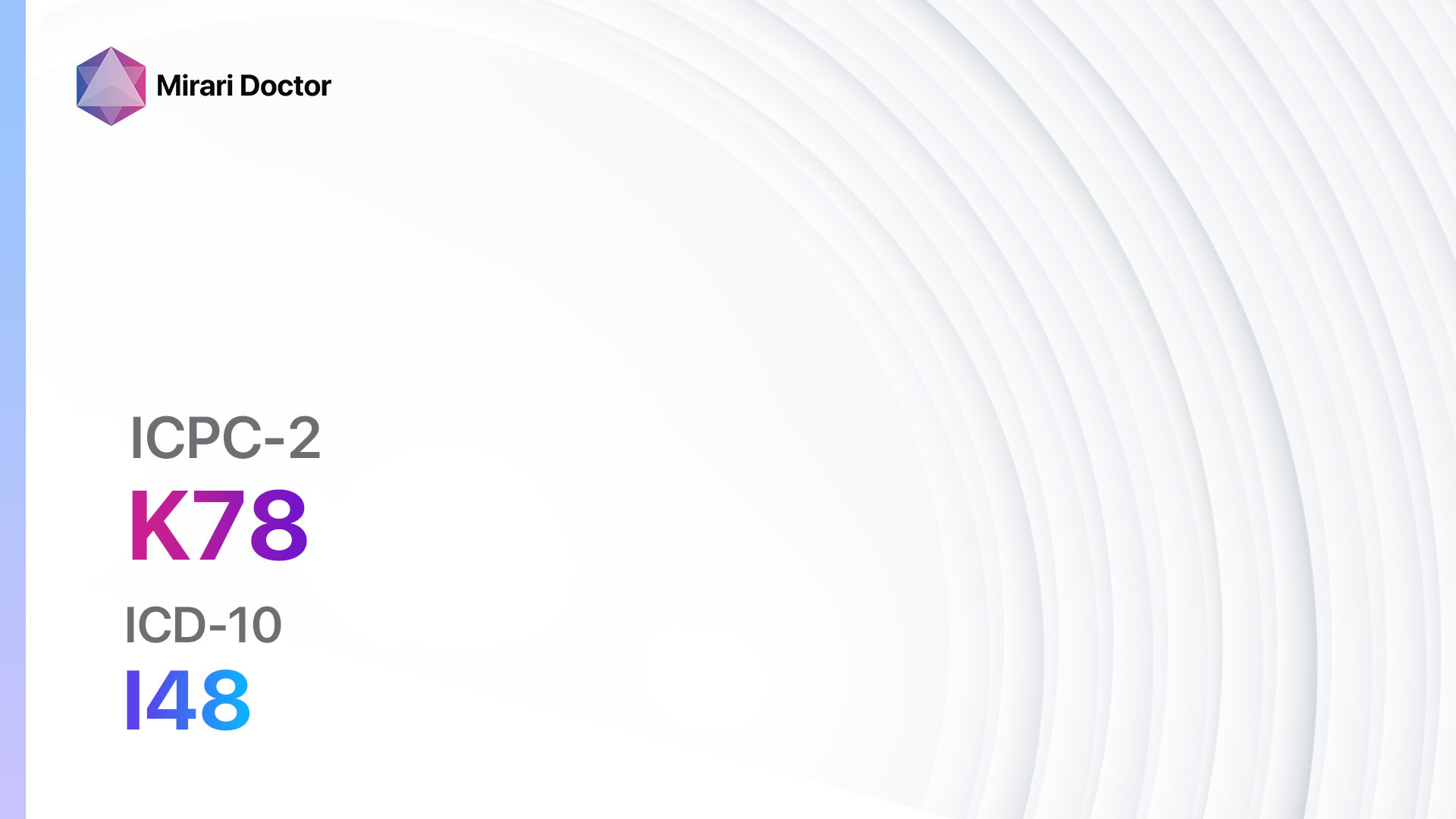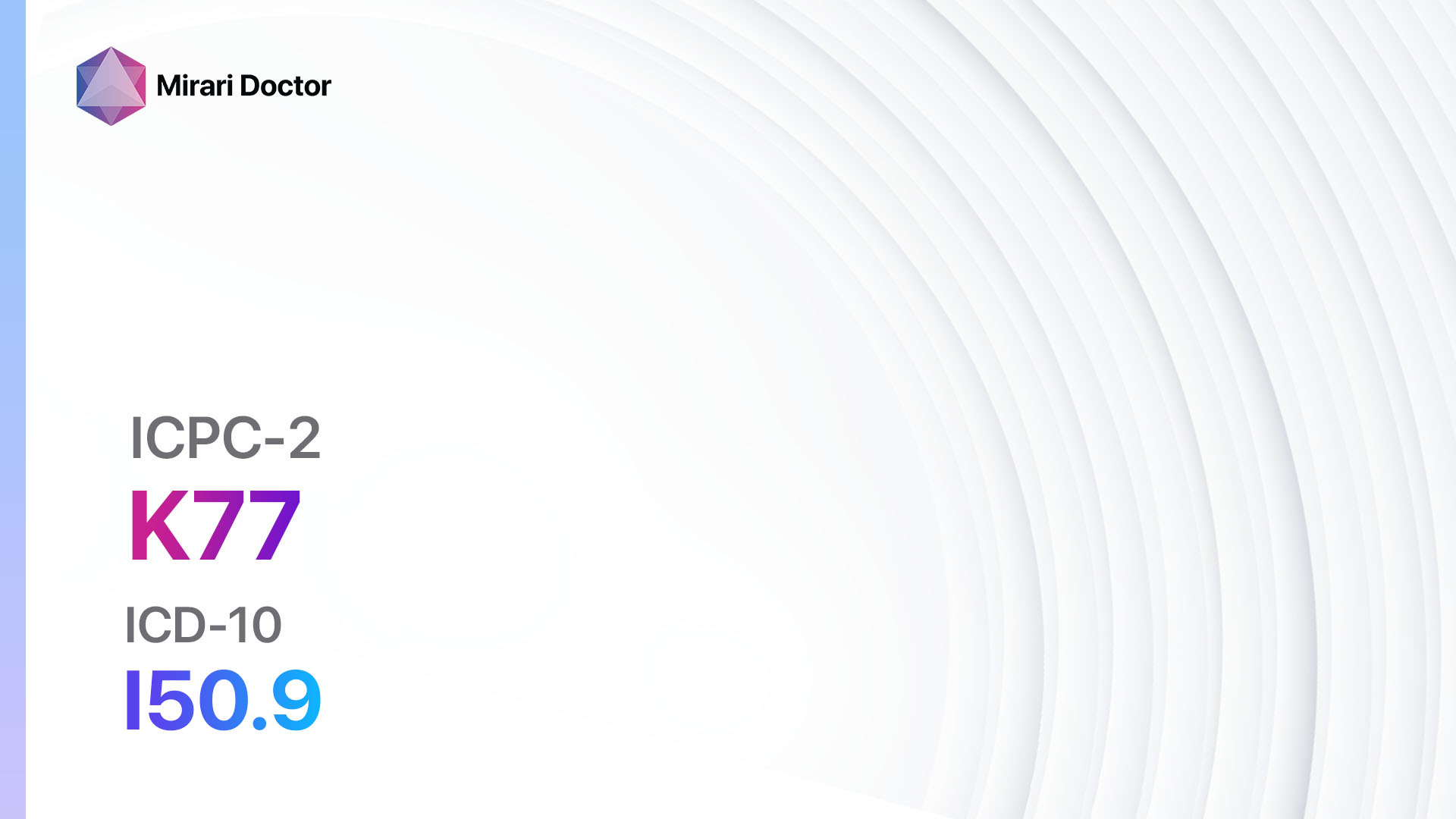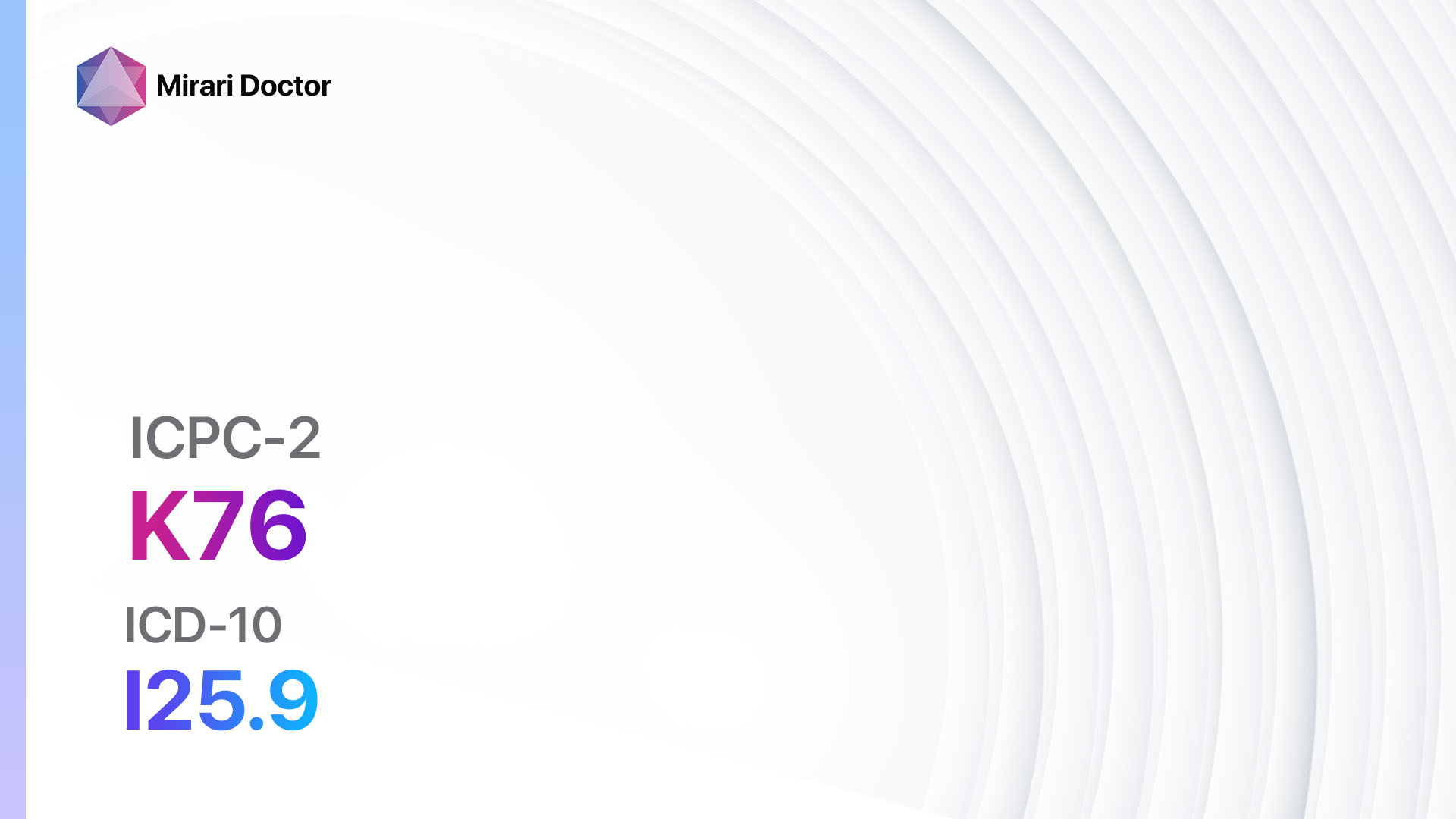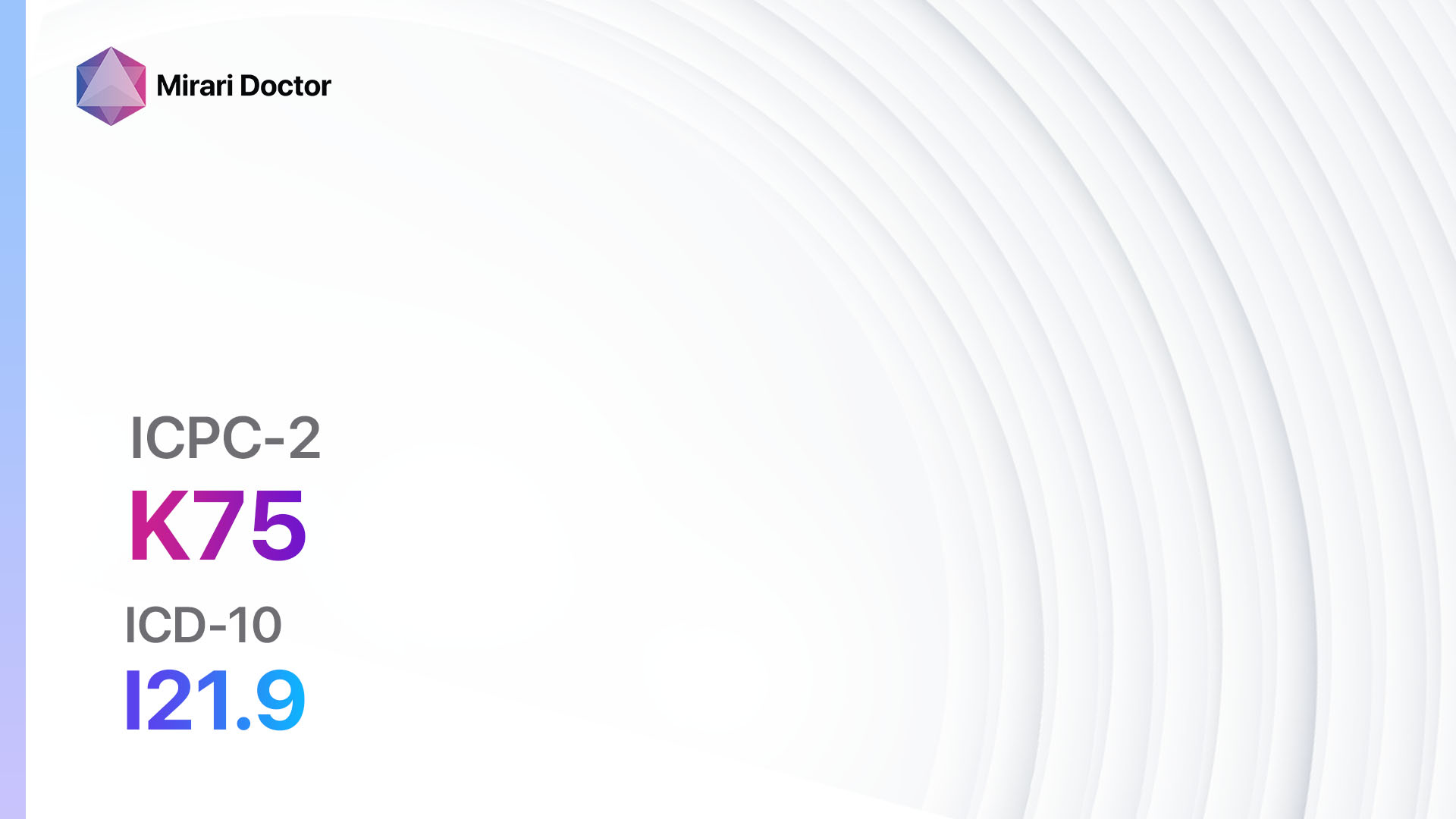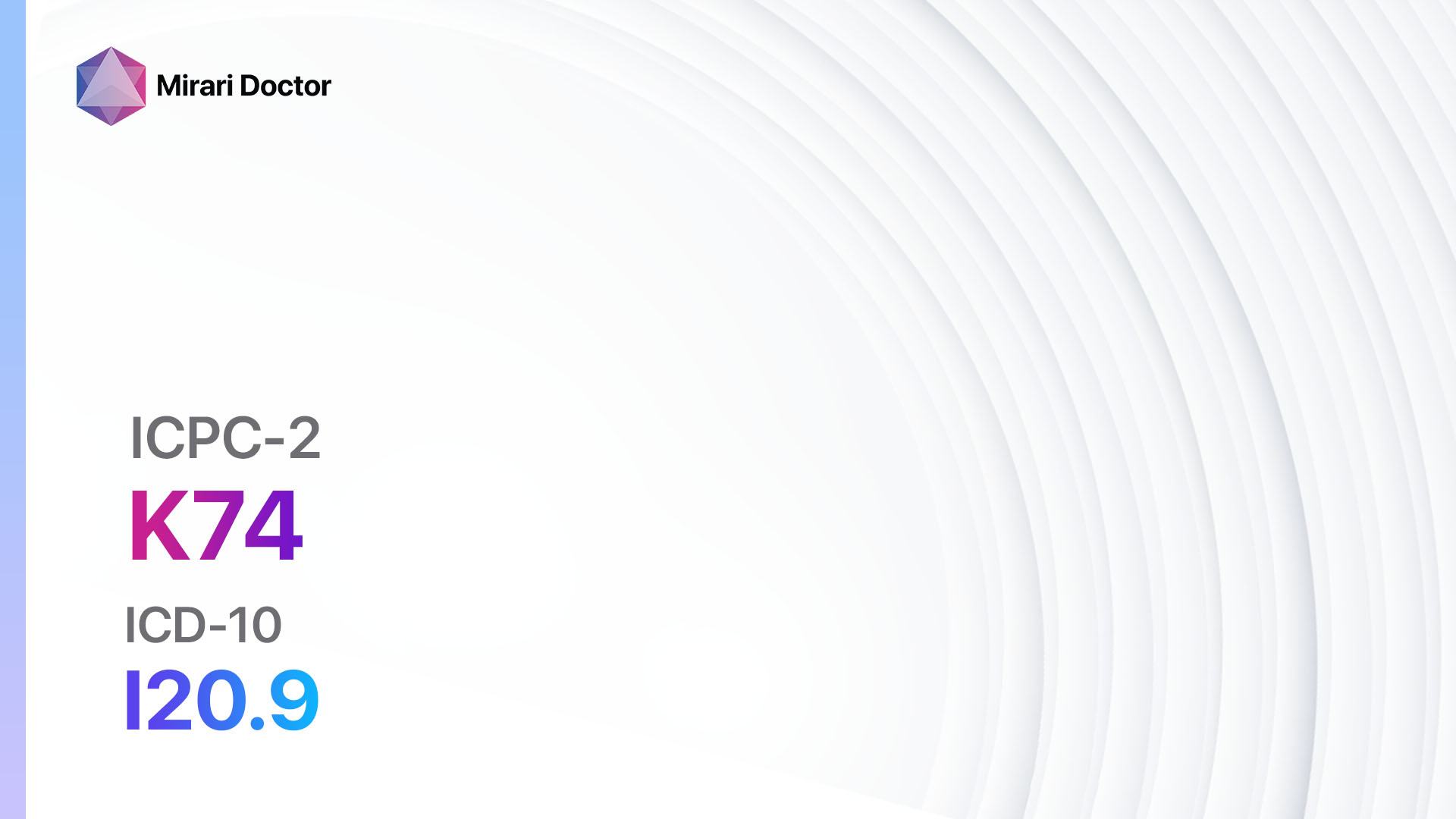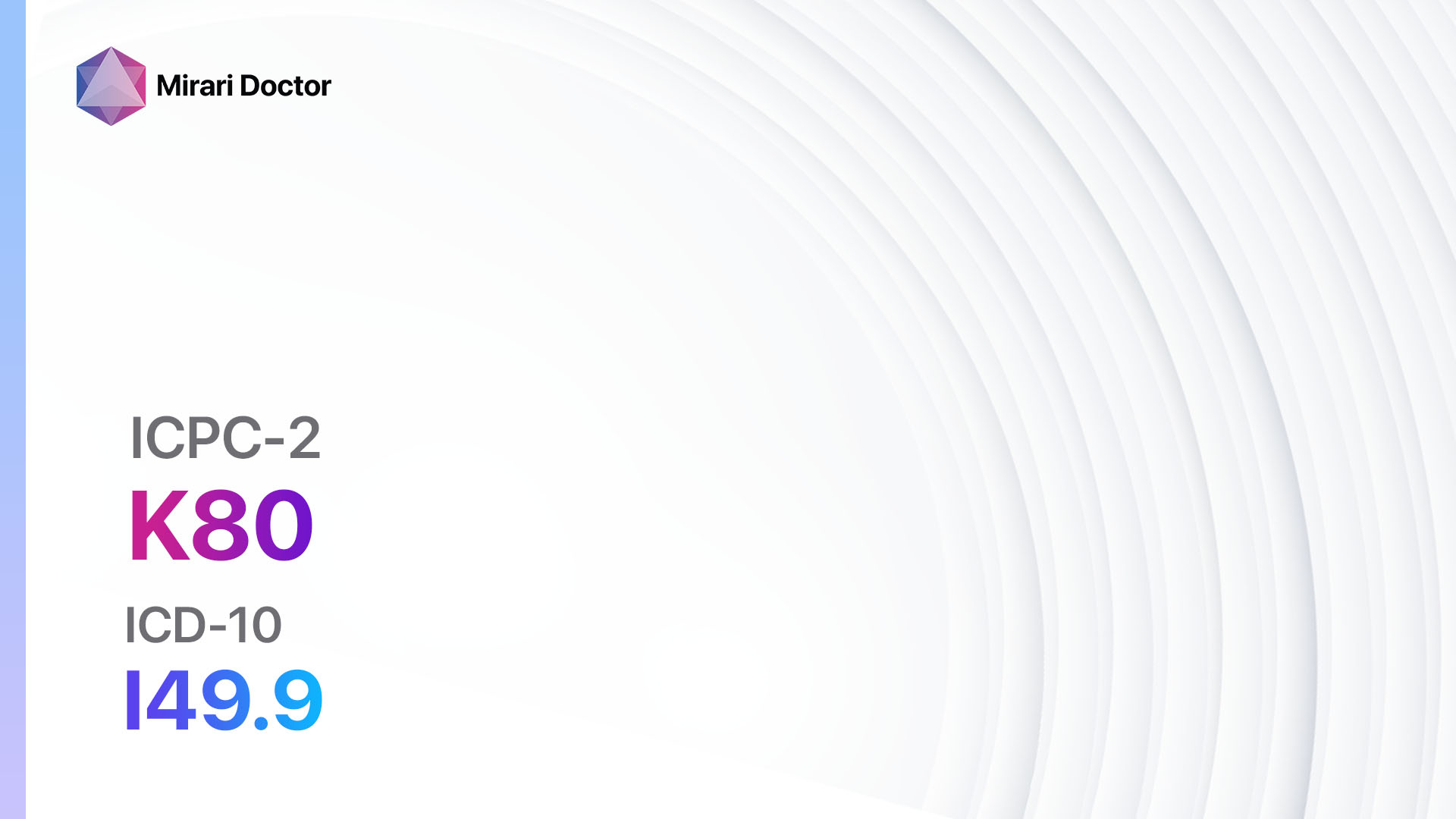
Introduction
Cardiac arrhythmia NOS refers to an abnormal heart rhythm that is not classified under a specific subtype. It is a significant condition as it can lead to serious complications, including heart failure, stroke, and sudden cardiac arrest.[1]The aim of this guide is to provide healthcare professionals with a comprehensive overview of the diagnosis and management of cardiac arrhythmia NOS.
Codes
Symptoms
- Palpitations: Sensation of a rapid, fluttering, or pounding heartbeat.[4]
- Fatigue: Feeling tired or exhausted even with minimal physical exertion.[4]
- Dizziness or lightheadedness: Feeling faint or unsteady.[4]
- Shortness of breath: Difficulty breathing or catching breath.[4]
- Chest pain or discomfort: Pressure, tightness, or pain in the chest.[4]
Causes
- Structural heart disease: Conditions such as coronary artery disease, heart valve disorders, or congenital heart defects can disrupt the normal electrical signals in the heart.[5]
- High blood pressure: Elevated blood pressure can strain the heart and disrupt its electrical system.[5]
- Thyroid disorders: Overactive or underactive thyroid gland can affect heart rhythm.[5]
- Medications: Certain medications, such as beta-blockers or antiarrhythmics, can cause or worsen arrhythmias.[5]
- Stimulants: Excessive consumption of caffeine, nicotine, or alcohol can trigger arrhythmias.[5]
- Electrolyte imbalances: Abnormal levels of potassium, sodium, or magnesium can affect the heart’s electrical activity.[5]
Diagnostic Steps
Medical History
- Obtain a detailed medical history, including any previous cardiac conditions, family history of arrhythmias, and current medications.[6]
- Inquire about symptoms, their frequency, duration, and any triggers or alleviating factors.[6]
- Assess for risk factors such as hypertension, diabetes, obesity, and smoking.[6]
Physical Examination
- Perform a thorough physical examination, including measurement of blood pressure, heart rate, and rhythm.[6]
- Auscultate the heart for abnormal sounds or murmurs.[6]
- Check for signs of heart failure, such as jugular venous distention or peripheral edema.[6]
- Assess for signs of thyroid dysfunction, such as an enlarged thyroid gland or tremors.[6]
Laboratory Tests
- Complete blood count (CBC): To assess for anemia or infection.[7]
- Basic metabolic panel (BMP): To evaluate electrolyte levels and kidney function.[7]
- Thyroid function tests: To determine if thyroid dysfunction is contributing to the arrhythmia.[7]
- Cardiac biomarkers (troponin, B-type natriuretic peptide): To rule out acute coronary syndrome or heart failure.[7]
- Lipid profile: To assess for underlying dyslipidemia.[7]
Diagnostic Imaging
- Electrocardiogram (ECG): A non-invasive test that records the electrical activity of the heart. It can identify the type and severity of arrhythmia.[8]
- Holter monitor: A portable ECG device worn by the patient for 24-48 hours to capture intermittent arrhythmias.[8]
- Echocardiogram: Uses sound waves to create images of the heart’s structure and function. It can identify structural abnormalities or heart valve disorders.[8]
- Stress test: Evaluates the heart’s response to physical exertion and can unmask exercise-induced arrhythmias.[8]
- Cardiac MRI or CT scan: Provides detailed images of the heart to assess for structural abnormalities or ischemic heart disease.[8]
Other Tests
- Electrophysiology study (EPS): Invasive procedure that involves threading catheters through blood vessels to the heart to assess the electrical conduction system. It can help identify the exact location and mechanism of the arrhythmia.[9]
- Tilt table test: Evaluates the heart’s response to changes in position and can help diagnose vasovagal syncope.[9]
- Genetic testing: In certain cases, genetic testing may be indicated to identify inherited arrhythmia syndromes.[9]
Follow-up and Patient Education
- chedule regular follow-up appointments to monitor the patient’s symptoms, response to treatment, and adjust medications if necessary.[10]
- Educate the patient about the importance of adhering to prescribed medications and lifestyle modifications.[10]
- Provide information on recognizing and managing symptoms, including when to seek emergency medical care.[10]
- Encourage the patient to maintain a healthy lifestyle, including regular exercise, a balanced diet, and stress management.[10]
Possible Interventions
Traditional Interventions
Medications:
Top 5 drugs for Cardiac arrhythmia NOS:
- Beta-blockers (e.g., Metoprolol, Atenolol):
- Cost: Generic versions are typically <$30/month.
- Contraindications: Severe bradycardia, uncontrolled heart failure.
- Side effects: Fatigue, dizziness, bradycardia.
- Severe side effects: Bronchospasm, heart block.
- Drug interactions: Calcium channel blockers, insulin.
- Warning: Should not be abruptly stopped.
- Calcium channel blockers (e.g., Verapamil, Diltiazem):
- Cost: Generic versions can be $10-$50/month.
- Contraindications: Severe hypotension, heart failure.
- Side effects: Constipation, dizziness, peripheral edema.
- Severe side effects: Heart block, exacerbation of heart failure.
- Drug interactions: Beta-blockers, grapefruit juice.
- Warning: Avoid in patients with impaired left ventricular function.
- Antiarrhythmic agents (e.g., Amiodarone, Flecainide):
- Cost: Generic versions can be $10-$50/month.
- Contraindications: Severe bradycardia, heart block, pulmonary fibrosis.
- Side effects: Fatigue, dizziness, visual disturbances.
- Severe side effects: Pulmonary toxicity, liver toxicity.
- Drug interactions: Digoxin, warfarin, grapefruit juice.
- Warning: Requires regular monitoring of thyroid and liver function.
- Sodium channel blockers (e.g., Lidocaine, Mexiletine):
- Cost: Generic versions can be $10-$50/month.
- Contraindications: Severe heart block, cardiogenic shock.
- Side effects: Dizziness, nausea, tremors.
- Severe side effects: Seizures, arrhythmias.
- Drug interactions: Beta-blockers, amiodarone.
- Warning: Requires monitoring of liver function and ECG.
- Digoxin:
- Cost: Generic versions can be $10-$50/month.
- Contraindications: Ventricular fibrillation, hypertrophic cardiomyopathy.
- Side effects: Nausea, vomiting, visual disturbances.
- Severe side effects: Arrhythmias, heart block.
- Drug interactions: Diuretics, verapamil, amiodarone.
- Warning: Requires monitoring of serum digoxin levels.
Alternative Drugs:
- Propafenone: A class IC antiarrhythmic agent used for supraventricular and ventricular arrhythmias.
- Dronedarone: An antiarrhythmic agent used for atrial fibrillation/flutter.
- Flecainide: A class IC antiarrhythmic agent used for supraventricular and ventricular arrhythmias.
- Sotalol: A non-selective beta-blocker with class III antiarrhythmic properties.
- Disopyramide: A class IA antiarrhythmic agent used for ventricular arrhythmias.
Surgical Procedures:
- Catheter ablation: Invasive procedure that uses radiofrequency energy to destroy abnormal heart tissue responsible for the arrhythmia. Cost: $15,000 to $50,000.
- Implantable cardioverter-defibrillator (ICD) placement: Surgically implanted device that monitors heart rhythm and delivers an electric shock to restore normal rhythm in case of life-threatening arrhythmias. Cost: $30,000 to $50,000.
- Pacemaker placement: Surgically implanted device that regulates the heart’s electrical activity by sending electrical impulses to the heart muscle. Cost: $20,000 to $50,000.
Alternative Interventions
- Acupuncture: May help reduce stress and improve overall well-being. Cost: $60-$120 per session.
- Yoga and meditation: Can help reduce stress and promote relaxation. Cost: Varies depending on the location and instructor.
- Herbal supplements: Some herbs, such as hawthorn or motherwort, may have potential benefits for heart health. Cost: Varies depending on the specific supplement.
- Coenzyme Q10: An antioxidant that may help improve heart function. Cost: $10-$30 per month.
- Omega-3 fatty acids: Found in fish oil supplements, they may have anti-inflammatory effects and help maintain heart health. Cost: $10-$30 per month.
Lifestyle Interventions
- Regular exercise: Engaging in aerobic exercise for at least 150 minutes per week can improve heart health. Cost: Varies depending on the type of exercise (e.g., gym membership, equipment).
- Healthy diet: Emphasize a diet rich in fruits, vegetables, whole grains, lean proteins, and low-fat dairy products. Cost: Varies depending on food choices and dietary preferences.
- Smoking cessation: Encourage patients to quit smoking to reduce the risk of cardiovascular disease. Cost: Varies depending on the method used (e.g., nicotine replacement therapy, medications, counseling).
- Limit alcohol intake: Excessive alcohol consumption can trigger arrhythmias. Cost: Varies depending on individual alcohol consumption habits.
- Stress management: Encourage stress-reducing techniques such as deep breathing exercises, mindfulness, or counseling. Cost: Varies depending on the method chosen (e.g., self-help books, therapy sessions).
It is important to note that the cost ranges provided are approximate and may vary depending on the location and availability of the interventions.
Mirari Cold Plasma Alternative Intervention
Understanding Mirari Cold Plasma
- Safe and Non-Invasive Treatment: Mirari Cold Plasma is a safe and non-invasive treatment option for various skin conditions. It does not require incisions, minimizing the risk of scarring, bleeding, or tissue damage.
- Efficient Extraction of Foreign Bodies: Mirari Cold Plasma facilitates the removal of foreign bodies from the skin by degrading and dissociating organic matter, allowing easier access and extraction.
- Pain Reduction and Comfort: Mirari Cold Plasma has a local analgesic effect, providing pain relief during the treatment, making it more comfortable for the patient.
- Reduced Risk of Infection: Mirari Cold Plasma has antimicrobial properties, effectively killing bacteria and reducing the risk of infection.
- Accelerated Healing and Minimal Scarring: Mirari Cold Plasma stimulates wound healing and tissue regeneration, reducing healing time and minimizing the formation of scars.
Mirari Cold Plasma Prescription
Video instructions for using Mirari Cold Plasma Device – K80 Cardiac arrhythmia NOS (ICD-10:I49.9)
| Mild | Moderate | Severe |
| Mode setting: 1 (Infection) Location: 5 (Lungs) Morning: 15 minutes, Evening: 15 minutes | Mode setting: 1 (Infection) Location: 5 (Lungs) Morning: 30 minutes, Lunch: 30 minutes, Evening: 30 minutes | Mode setting: 1 (Infection) Location: 5 (Lungs) Morning: 30 minutes, Lunch: 30 minutes, Evening: 30 minutes |
| Mode setting: 2 (Wound Healing) Location: 5 (Lungs) Morning: 15 minutes, Evening: 15 minutes | Mode setting: 2 (Wound Healing) Location: 5 (Lungs) Morning: 30 minutes, Lunch: 30 minutes, Evening: 30 minutes | Mode setting: 2 (Wound Healing) Location: 5 (Lungs) Morning: 30 minutes, Lunch: 30 minutes, Evening: 30 minutes |
| Mode setting: 7 (Immunotherapy) Location: 1 (Sacrum) Morning: 15 minutes, Evening: 15 minutes | Mode setting: 7 (Immunotherapy) Location: 1 (Sacrum) Morning: 30 minutes, Lunch: 30 minutes, Evening: 30 minutes | Mode setting: 7 (Immunotherapy) Location: 1 (Sacrum) Morning: 30 minutes, Lunch: 30 minutes, Evening: 30 minutes |
| Mode setting:7 (Immunotherapy) Location:4 (Heart, Bile & Pancreas) Morning: 15 minutes, Evening: 15 minutes | Mode setting:7 (Immunotherapy) Location:4 (Heart, Bile & Pancreas) Morning: 30 minutes, Lunch: 30 minutes, Evening: 30 minutes | Mode setting:7 (Immunotherapy) Location:4 (Heart, Bile & Pancreas) Morning: 30 minutes, Lunch: 30 minutes, Evening: 30 minutes |
| Total Morning:60minutesapprox.$10USD, Evening:60minutesapprox.$10USD | Total Morning:120minutesapprox.$20USD, Lunch:120minutesapprox. $20 USD, Evening:120minutesapprox. $20 USD, | Total Morning:120minutesapprox.$20USD, Lunch:120minutesapprox. $20 USD, Evening:120minutesapprox. $20 USD, |
| Usualtreatmentfor7-60daysapprox.$140USD–$1200USD | Usualtreatmentfor6-8weeksapprox.$2,520USD–$3,360USD | Usualtreatmentfor3-6monthsapprox.$5,400USD–$10,800USD |
 |
|
Use the Mirari Cold Plasma device to treat Cardiac arrhythmia NOS effectively.
WARNING: MIRARI COLD PLASMA IS DESIGNED FOR THE HUMAN BODY WITHOUT ANY ARTIFICIAL OR THIRD PARTY PRODUCTS. USE OF OTHER PRODUCTS IN COMBINATION WITH MIRARI COLD PLASMA MAY CAUSE UNPREDICTABLE EFFECTS, HARM OR INJURY. PLEASE CONSULT A MEDICAL PROFESSIONAL BEFORE COMBINING ANY OTHER PRODUCTS WITH USE OF MIRARI.
Step 1: Cleanse the Skin
- Start by cleaning the affected area of the skin with a gentle cleanser or mild soap and water. Gently pat the area dry with a clean towel.
Step 2: Prepare the Mirari Cold Plasma device
- Ensure that the Mirari Cold Plasma device is fully charged or has fresh batteries as per the manufacturer’s instructions. Make sure the device is clean and in good working condition.
- Switch on the Mirari device using the power button or by following the specific instructions provided with the device.
- Some Mirari devices may have adjustable settings for intensity or treatment duration. Follow the manufacturer’s instructions to select the appropriate settings based on your needs and the recommended guidelines.
Step 3: Apply the Device
- Place the Mirari device in direct contact with the affected area of the skin. Gently glide or hold the device over the skin surface, ensuring even coverage of the area experiencing.
- Slowly move the Mirari device in a circular motion or follow a specific pattern as indicated in the user manual. This helps ensure thorough treatment coverage.
Step 4: Monitor and Assess:
- Keep track of your progress and evaluate the effectiveness of the Mirari device in managing your Cardiac arrhythmia NOS. If you have any concerns or notice any adverse reactions, consult with your health care professional.
Note
This guide is for informational purposes only and should not replace the advice of a medical professional. Always consult with your healthcare provider or a qualified medical professional for personal advice, diagnosis, or treatment. Do not solely rely on the information presented here for decisions about your health. Use of this information is at your own risk. The authors of this guide, nor any associated entities or platforms, are not responsible for any potential adverse effects or outcomes based on the content.
Mirari Cold Plasma System Disclaimer
- Purpose: The Mirari Cold Plasma System is a Class 2 medical device designed for use by trained healthcare professionals. It is registered for use in Thailand and Vietnam. It is not intended for use outside of these locations.
- Informational Use: The content and information provided with the device are for educational and informational purposes only. They are not a substitute for professional medical advice or care.
- Variable Outcomes: While the device is approved for specific uses, individual outcomes can differ. We do not assert or guarantee specific medical outcomes.
- Consultation: Prior to utilizing the device or making decisions based on its content, it is essential to consult with a Certified Mirari Tele-Therapist and your medical healthcare provider regarding specific protocols.
- Liability: By using this device, users are acknowledging and accepting all potential risks. Neither the manufacturer nor the distributor will be held accountable for any adverse reactions, injuries, or damages stemming from its use.
- Geographical Availability: This device has received approval for designated purposes by the Thai and Vietnam FDA. As of now, outside of Thailand and Vietnam, the Mirari Cold Plasma System is not available for purchase or use.
References
- Arrhythmia: Symptoms & Treatment – Cleveland Clinic. (n.d.). Cleveland Clinic.//my.clevelandclinic.org/health/diseases/16749-arrhythmia
- ICPC-2 Chapter: K Cardiovascular – RxReasoner. (n.d.). RxReasoner.//www.rxreasoner.com/icpc2codes/K
- I49.9 – Cardiac arrhythmia, unspecified – ICD-10-CM Codes. (n.d.). ICD-10-CM Codes.//www.icd10data.com/ICD10CM/Codes/I00-I99/I30-I5A/I49-
- Heart arrhythmia – Symptoms and causes – Mayo Clinic. (2023, March 13). Mayo Clinic.//www.mayoclinic.org/diseases-conditions/heart-arrhythmia/symptoms-causes/syc-20350668
- Heart arrhythmia – Symptoms, Causes, Diagnosis and Treatment. (n.d.). Medpark Hospital.//www.medparkhospital.com/en-US/disease-and-treatment/heart-arrhythmia
- Arrhythmia Diagnosis & Management. (n.d.). Cardiology Healthcare.//www.cardiologyhealthcare.com/arrhythmia-diagnosis-management/
- Overview of Cardiac Arrhythmias and Treatment Strategies – PMC. (n.d.). PubMed Central (PMC).//www.ncbi.nlm.nih.gov/pmc/articles/PMC10301085/
- Heart arrhythmia – Diagnosis and treatment – Mayo Clinic. (2023, March 13). Mayo Clinic.//www.mayoclinic.org/diseases-conditions/heart-arrhythmia/diagnosis-treatment/drc-20350674
- [Cardiac arrhythmias: Diagnosis and management] – PubMed. (2016, February 1). PubMed.//pubmed.ncbi.nlm.nih.gov/26872434/
- Cardiac Arrhythmia: Care Instructions – MyHealth Alberta. (n.d.). MyHealth Alberta.//myhealth.alberta.ca/Health/aftercareinformation/pages/conditions.aspx?hwid=ut2768
Related articles
Made in USA


